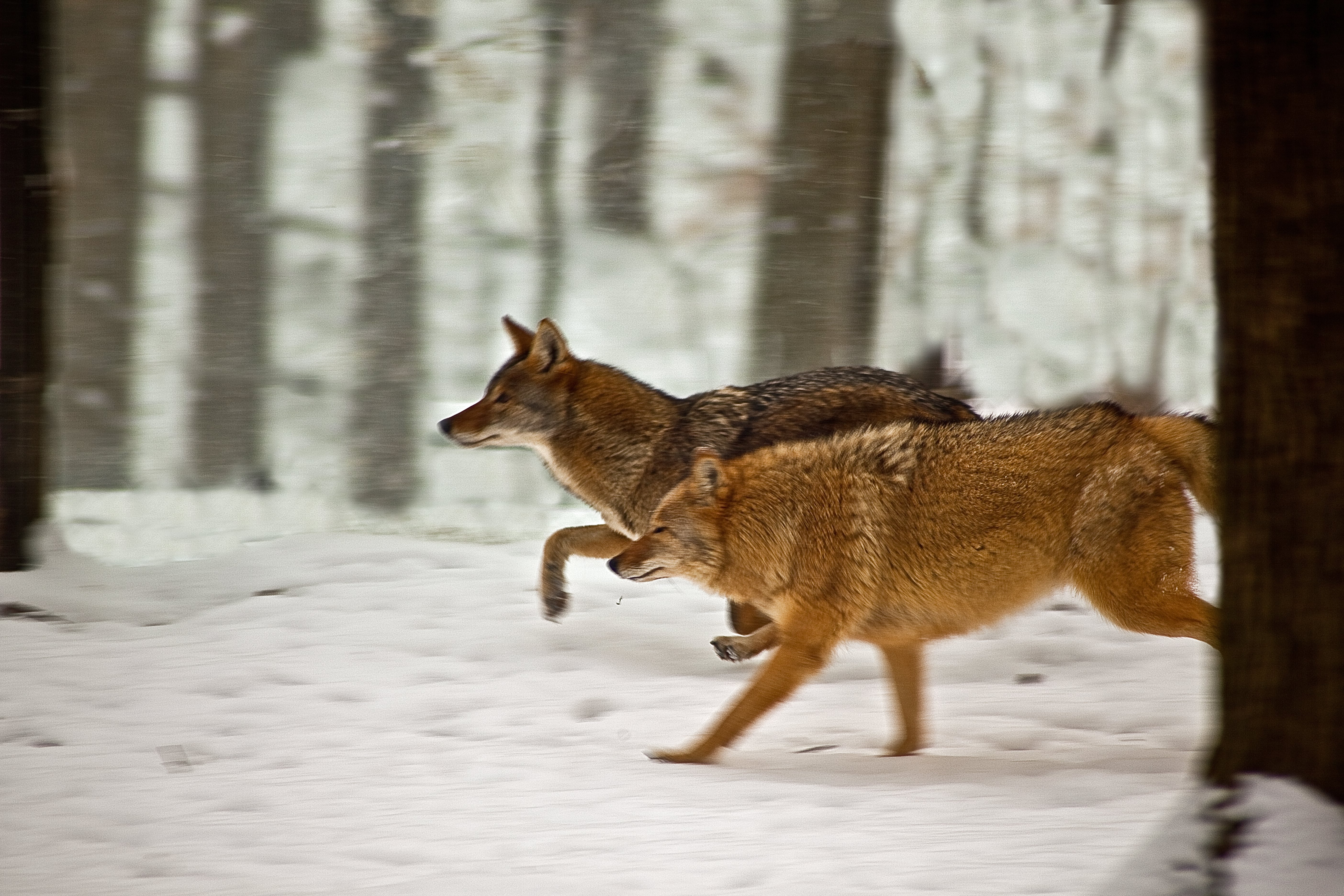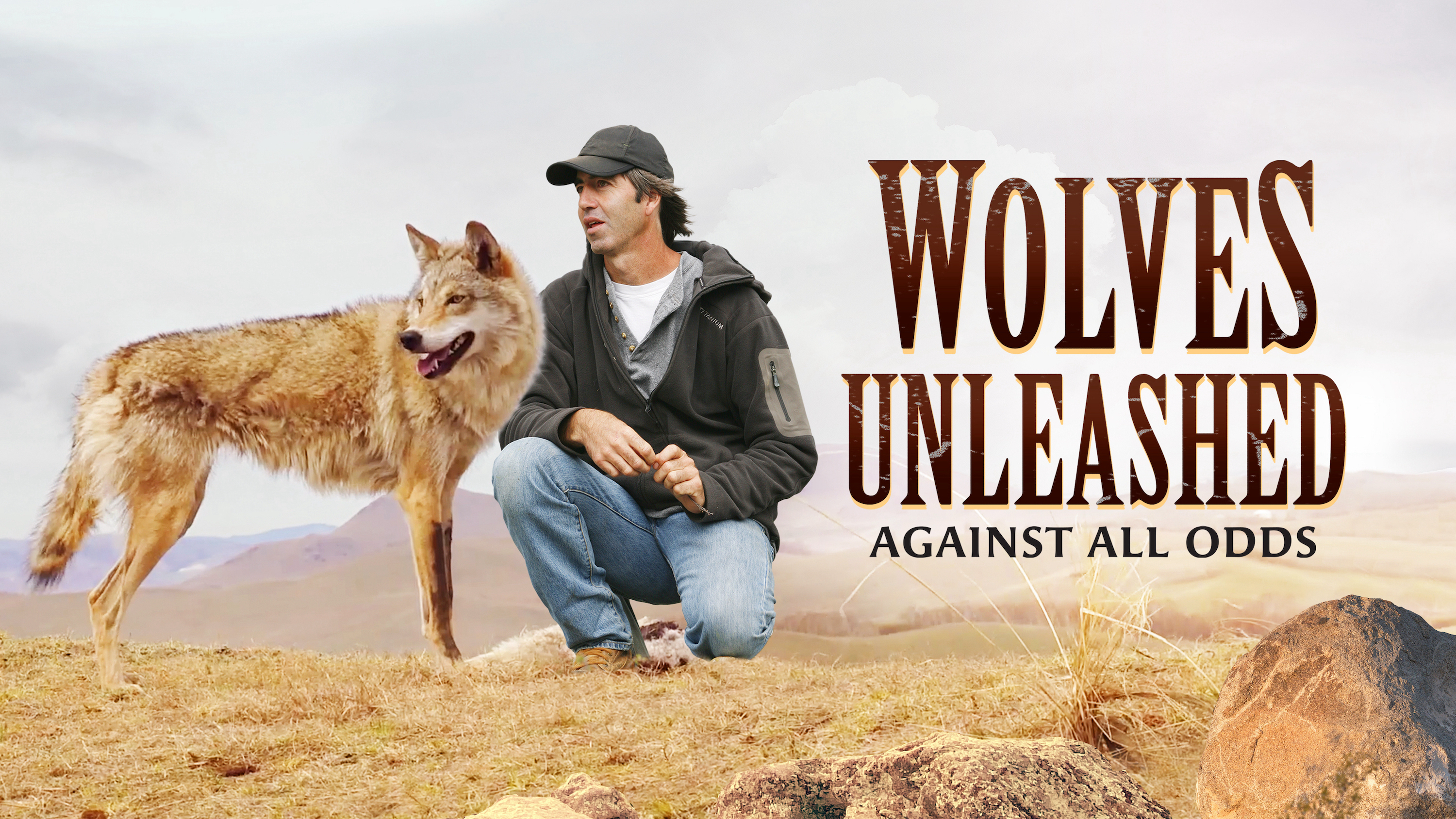The coyote-wolf hybrid was first spotted in 1919. In the more than 100 years since, the “coywolf” population has grown into the millions.
◊
The wolf-coyote hybrid, often called a coywolf or Eastern coyote, is the result of naturally occurring hybridization between coyotes and wolves. But human development also had a hand in putting coyotes and wolves in the right circumstances for hybridization. The coywolf, first sighted near Ontario, Canada, in 1919, lives in North American regions where coyote and wolf ranges overlap. There is even some dog DNA mixed in!
The Coywolf is Not a New Species
While the coywolf’s genetic makeup is not specific enough to be classified as a new species, both the wolf (Canis lupus) and coyote (Canis latrans) belong to the same genus, Canis, which allows the genetic compatibility for interbreeding. But the coyote-wolf hybrid does have distinctive characteristics. For example, while the larger percentage of DNA is coyote, the coywolf is twice the size of a coyote. With a larger jaw and bigger muscles than a coyote, the coywolf can take down large animals like deer. Moreover, while the wolf prefers hunting in forests, the coyote prefers open spaces. The coyote-wolf hybrid is adept in both domains.
Follow world-renowned animal trainer Andrew Simpson on treks with wolves.
The coyote-wolf hybrid is a formidable hunter, and not just because of its size and hunting territories. It also reflects adaptive and opportunistic behaviors favorable to survival. In addition, both wolves and coyotes are pack animals with complex social structures. This affinity is yet another aspect of how the coywolf came about. It’s the coywolf howl, however, that is perhaps the paradigmatic signal of the hybrid, beginning with the deep pitch of the wolf and ending in coyote-like high-pitched yips.

Howling wolf (Credit: Fool4myCanon, via Wikimedia Commons)
Now numbering in the millions, the coywolf population’s territory includes Canadian provinces, including the Maritimes and southern Ontario. Knowing no national boundaries, the coyote-wolf hybrid can also be found in the Great Lakes region and the eastern United States – as far south as Virginia and as far north as Maine, Vermont, and New York.
Habitat Loss and Fragmentation
There are multiple events and circumstances that have led to the wolf-coyote hybrid.
Coywolf habitats have overlapped partly because human activity has taken over or fragmented natural habitats. In the eastern United States, for example, the colonization and conversion of forests into agricultural land resulted in the rapid decline of the eastern gray wolf population, thereby creating favorable environments for the western coyote population, which began to move in from the southwest. The shrinking population meant fewer mates for the eastern gray wolf, which began to mate with the western coyotes. Similar conditions pushed the western coyote east.
Ecological Changes
A related pressure on both wolves and coyotes has been changes in ecosystems, such as deforestation and urbanization, which have disrupted the natural balance of predator-prey relationships. Those changes, in turn, have influenced the behavior and distribution of both wolves and coyotes.

Coyotes running in the snow (Credit: ForestWander, via Wikimedia Commons)
Hunting and Poisoning
Hunting and poisoning have also put pressure on both wolves and coyotes. From Texas ranchers who needed land for livestock to “wolfers” who believed they were exterminating vermin, wolves and coyotes have long been killed. In fact, over 400 years of extensive hunting of gray wolves, along with consistent poisoning, led to a population decline and reduced the number of suitable mates.
Hybridization can have implications for wildlife management and conservation efforts, as it may influence population dynamics, genetic diversity, and ecological interactions in affected areas. Today, ecologists and biologists are working to protect these fascinating animals, and to educate people about the role wolves, coyotes, and coywolves play as vital members of the ecological community.
Ω
Title Image: a coywolf in snowy woods (Source: Wikimedia Commons)
.jpg)
.jpg)
